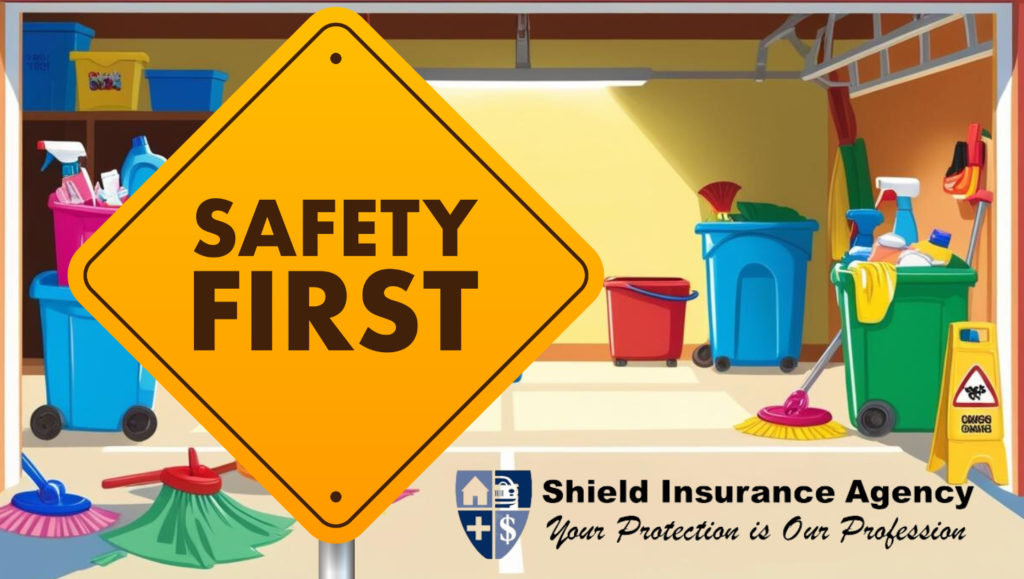When thinking about the biggest risks to your home, it’s easy to overlook your garage. However, with dangerous chemicals, a high potential for break-ins, and powered equipment, your garage easily becomes a hidden homeowners’ hazard.
Help keep your garage and family safe by completing these three tasks: maintenance, organization and protection.
1. Maintain your garage.
The first step in keeping a safe garage is performing simple maintenance checks to be sure everything is working properly. Visually examine your garage door and look for loose nuts and bolts, frayed cables, and rusted springs. Also, test the manual release function and the auto-stop system. To test the automatic reversal system, place an object like a brick or wooden block in the path of the closing door. If working properly, the closing door should detect the object and automatically open back up.
If you notice any wear and tear or hear any concerning noises, contact a garage door professional to examine and repair your door.
Another helpful maintenance tip – clean your garage every six months. With all of the chemicals and equipment in your garage, it’s essential to keep a clean space to minimize risk.
2. Organize your garage.
In addition to having a clean and well-maintained garage, it’s important to be organized and to safely store items. Chemicals should be placed in a locked box on a high shelf, out of reach from small children. This includes cleaning solutions, glues, pool supplies, pest-control products and more.
Also, make sure that all tools and lawn care equipment are stored out of reach or are properly mounted to the wall. And when it comes to powered tools or equipment, like a lawn mower, make sure each one has cooled down before storing it away.
3. Protect your garage.
According to the FBI, there were more than 1.4 million burglaries in the U.S. in 2017. Keeping burglars out of your garage not only protects the belongings you store there, but it can also keep intruders out of your house. Criminals can often get into your home through the garage or, if the garage is a separate structure, they can use your own tools to break into your home.
To prevent a break-in, keep your garage door closed and do not store a spare key inside. Also, it may be wise to invest in adequate outdoor lighting, including motion-sensing lights, as well as an alarm system. Get to know your neighbors, so they can alert you or the authorities of any suspicious behavior.
The final way to protect your garage is through insurance. A typical homeowners’ policy contains many different coverages in addition to the portion that protects your house. So, whether your garage is attached to your house or is its own free-standing structure, it should be covered by a standard homeowners’ insurance policy. Be sure to discuss your garage with your independent insurance agent to ensure that you have the right coverage for your unique situation.
This article is for informational and suggestion purposes only. If the policy coverage descriptions in this article conflict with the language in the policy, the language in the policy applies. Talk with your independent agent if you have any questions regarding the details of your home insurance policy or if you need to update your insurance.



















































